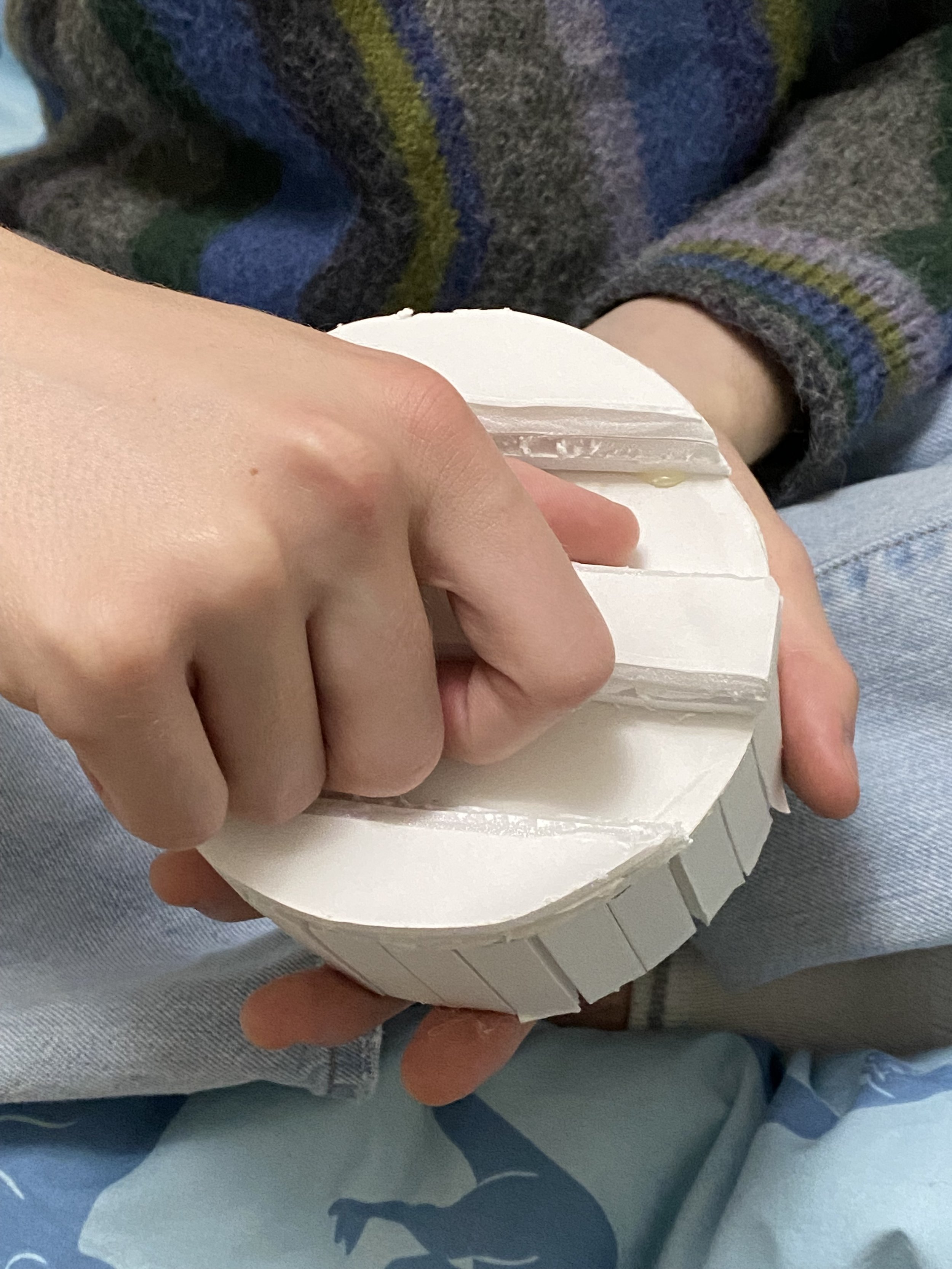
SOGOCO, the portable rice cooker for fresh, hot, and healthy lunches on the go
Often food provided at school and work cafeterias, as well as from takeout restaurants and vending machines, is high in sugar and sodium, causing health problems long term. Also, communal cooking areas have high levels of bacteria and food residue on touch points. Adapting a rice cooker for portable, personal use at work or at school could provide a new option for healthy lunches.

Use Scenario
SOGOCO is tailored to students and professionals who commute for school or work. Designed to be packed in the morning before heading off, SOGOCO can be tossed in a bag for travel. Just plug it in with the USB-C cable that you already bring for your laptop, and let your homemade, healthy lunch cook.
Function
SOGOCO runs on 100 watts of power delivered by a USB-C laptop charger. When the cooker is plugged in, it automatically enters warming mode. A heating element begins to boil the water in the rice cooker when the cook button is pressed. Once the rice is cooked and all the water has boiled off or been absorbed by the rice, the temperature in the cooker spikes above 100 degrees Celsius. At that point, the flexible hybrid electronic temperature array that wraps around the internal bowl of the cooker picks up on the rapid change in temperature, and the cooker switches back to warming mode. This process takes about 35 minutes, with the double-walled stainless steel outer container helping to boost efficiency.
Ergonomics
Function
Usability
Context
Research & User Testing
SOGOCO’s form was determined through testing with student participants who placed different massing models in a backpack. The size and shape of the inner bowl were also tested with physical models to confirm a comfortable depth for eating out of.
Participants communicated to me that they would want to be able to pack their entire lunch in the cooker since it takes up a large portion of their bag space. I determined that the lid could double as a compartment for other food. The rising steam during cooking would reheat prepared food in that compartment.
The Rice Cup
SOGOCO comes with a rice cup measure, like most other rice cookers. However, this rice cup measure is made of a flexible silicone and can be collapsed and stored inside the lid of the cooker. It also has small holes, letting you rinse rice easily without the use of a second kitchen tool.
Ergonomics
The crank handle at the top of the cooker makes it easier for people with different ability or smaller hand size to open the cooker. The crank handle is flat so that the lid, which additional food storage, can be placed face up on a table. The strap makes it easier for people with smaller hand size to carry the cooker with one hand.
Simple with a single cook button, the user interface uses a membrane switch with embedded LEDs. The yellow light indicates the cooker is on warming mode and the red represents cook mode. As the cooker heats up, the temperature sensor measures the increase and the light extends up the bar. This gives the user a sense of the remaining cook time without using the expensive algorithm technology found in high-end rice cookers. When the rice is cooked, the light switches back to yellow, indicating a return to warming mode. Various configurations were explored and user tested, with the vertical LED indicator reminiscent of a thermometer being the most clear.
UI
Ergonomics
Function
Usability
Context
Feature Testing
During the initial testing, the cylindrical form that was best for packing and eating from resulted in a lid that was too big for some users to easily twist off. Similarly, the cooker was too large for some users to carry with one hand. I determined that handles to help with twisting off the lid and for carrying the cooker were necessary, for which different forms were tested. The user interface and temperature indicator light were also user tested for clarity using paper cut-out interfaces.
Design Constraints
Since the cooker is packed at home in the morning, it needs to be leakproof in transit. However, it needs to release steam when the cooker is turned on, and this should be accomplished without a manual switch, which would provide room for user error. A check valve is needed that opens at a greater psi than the pressure from the liquid water.
The rice bowl needs to hold one serving of rice. Since rice can triple in size, the bowl needs to be a minimum of 540 mL or 3 rice cups. Extra room for vegetables or meat is needed.
USB-C can deliver 100 W. To boil the amount of water needed to cook 1 rice cup at 100 W, it takes 15 minutes at 100% efficiency. Accounting for some loss of heat, I rounded up to 20 minutes. It takes an additional 15 minutes to cook the rice, for a total time of 35 minutes.
Components
Price was kept down to appeal to students and young professionals by using a heating element instead of higher-end induction technology and by using inexpensive materials like polypropylene and aluminum.
Vacuum wall stainless steel main container and lid with electrostatic coating
Polypropylene check valve
Polypropylene inner lid
Silicone rice cup
Aluminum rice bowl with non-stick coating
Aluminum heating element
PCB with USB-C port and capacitor
Flexible hybrid electronic temperature sensor
Membrane switch user interface with embedded LED indicator
CMF Moodboard
Inspiration for the materials and colours, as well as the overall form, was taken from Muji products. The glossy white plastic finish on the outside of the main double-walled container is similar to many other rice cookers, appealing to consumers by aligning with their mental model for rice cookers.


















